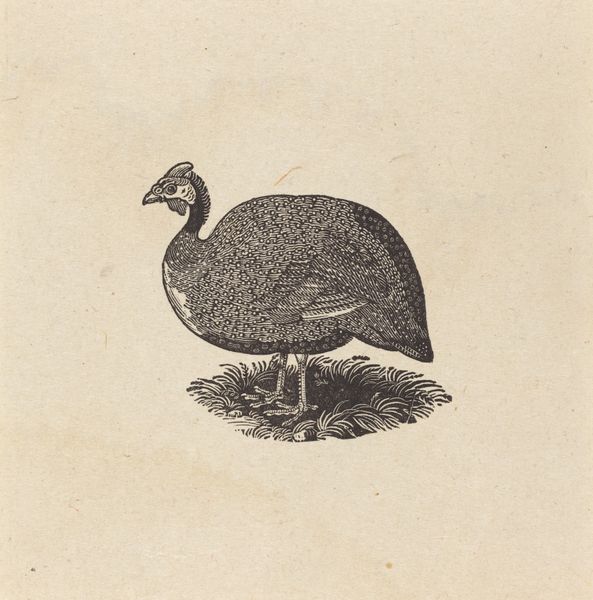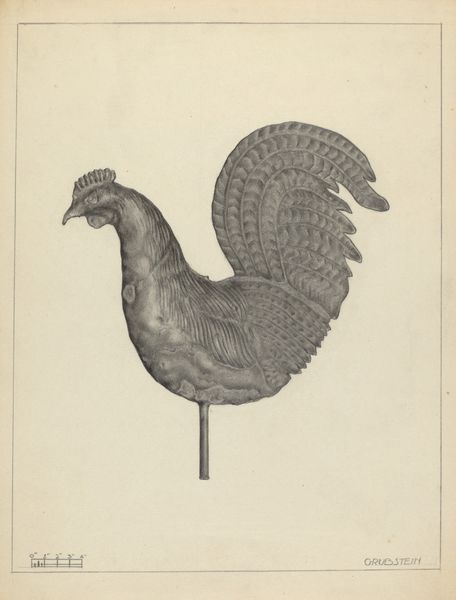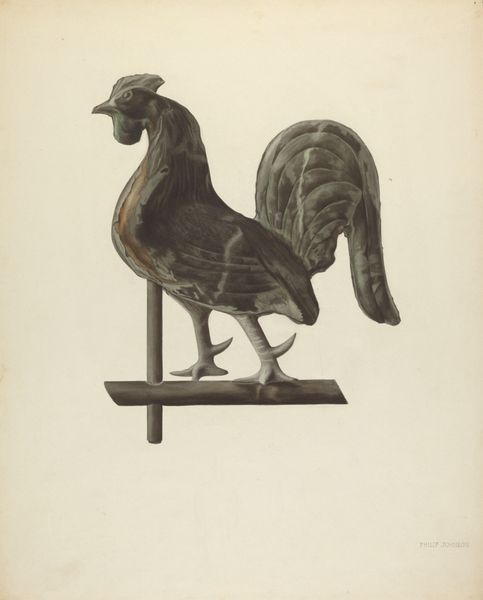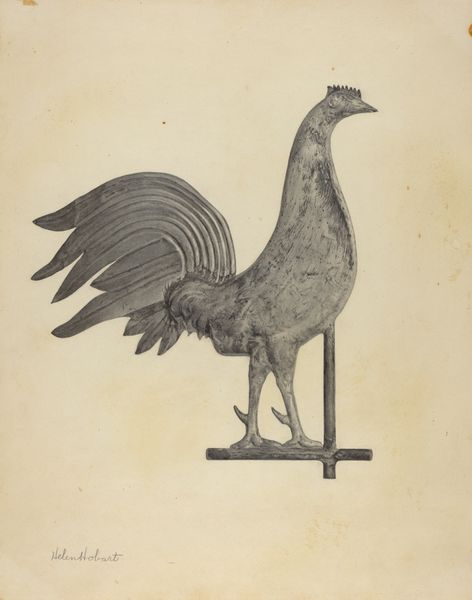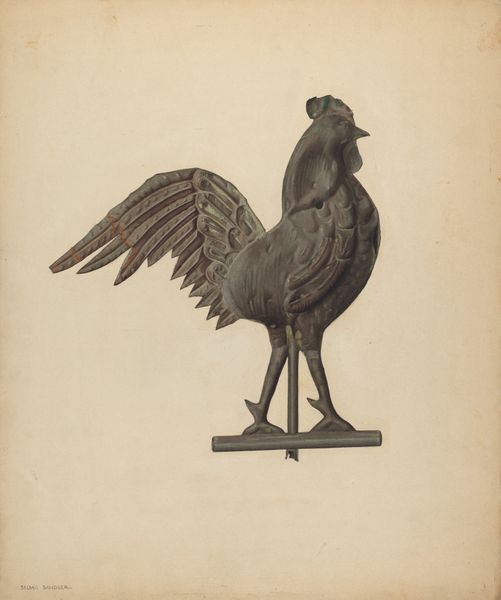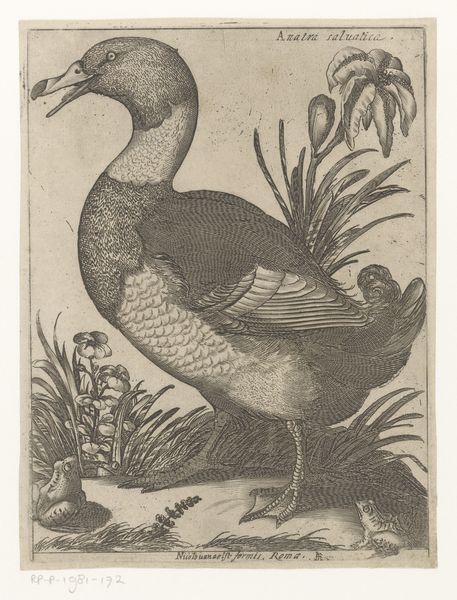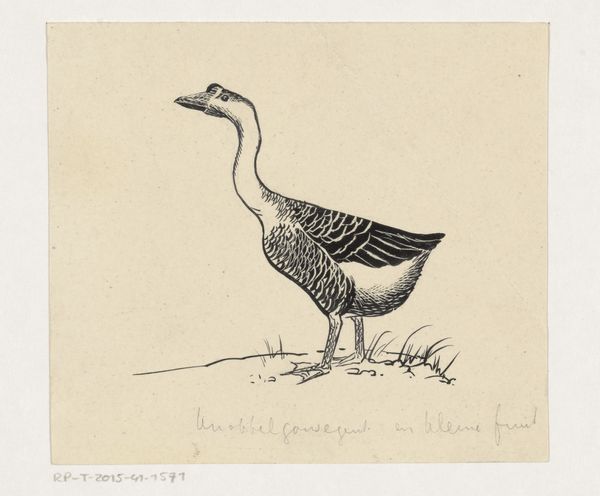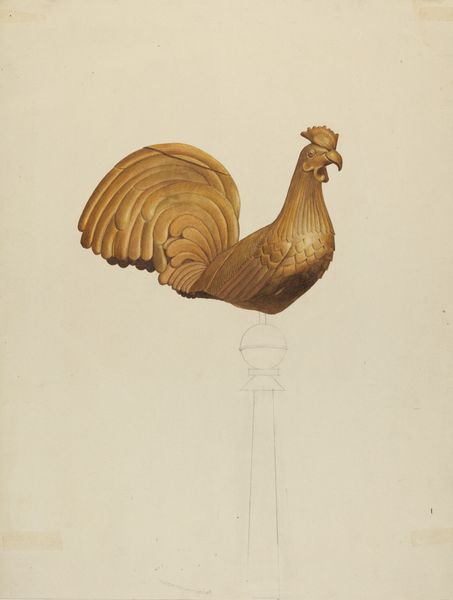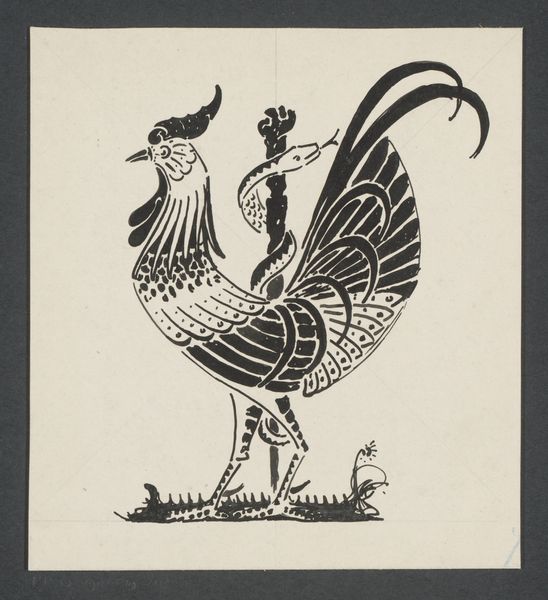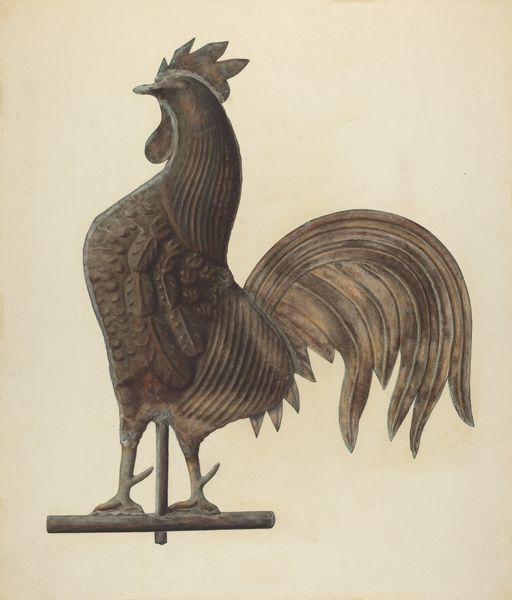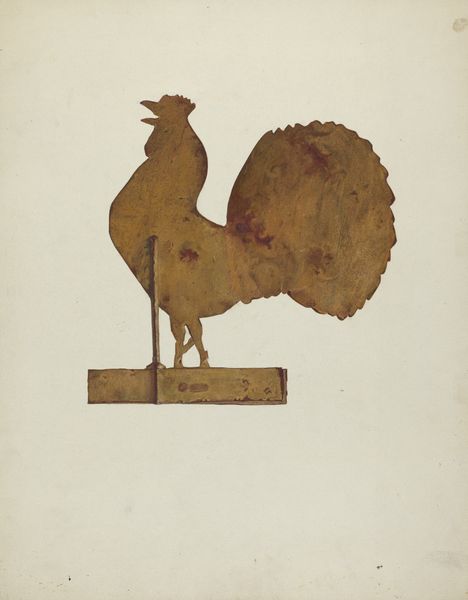
drawing, paper, pencil
#
pencil drawn
#
drawing
#
pencil sketch
#
paper
#
pencil drawing
#
geometric
#
pencil
Dimensions: overall: 27.4 x 20.2 cm (10 13/16 x 7 15/16 in.) Original IAD Object: 40 1/2" high
Copyright: National Gallery of Art: CC0 1.0
Editor: So, this pencil drawing on paper is "Ostrich Weather Vane," created around 1937 by Herman Bader. The detail in the sketch gives it a sculptural quality; it almost feels like you could reach out and touch the cool metal of a real weather vane. What catches your eye in this piece? Curator: It's fascinating how Bader has used a readily available material – pencil on paper – to depict a weather vane, an object traditionally made from crafted metal. This raises questions about value. A weather vane’s value resides in its function and material endurance, brass or copper for example, standing against the elements, and showing which way the wind blows. But here, the means are subverted. Editor: So the medium contrasts with the intended final form of a weathervane? Curator: Precisely! This drawing collapses the boundary between preparatory sketch and final product. Consider also, the social context: the 1930s, the Great Depression, resources were scarce. Could this drawing be seen as a comment on material accessibility or a reflection on adapting craft when resources were limited? How do we interpret Bader's choice of depicting an item associated with a specific labor and traditional craftsmanship? Editor: It's interesting to think of this detailed drawing not just as a sketch but as a representation of a potentially unrealizable object, given the social climate. Curator: Exactly. Furthermore, by choosing an exotic animal like an ostrich, traditionally seen as imported and luxurious, as opposed to a more common farm animal used as a more appropriate model for vanes at the time, does Bader suggest an aspirational element, a longing for something beyond the immediate material conditions of the time? Editor: That's a really insightful connection, framing the artwork through the lens of its historical and material conditions. Curator: Indeed, analyzing art from the standpoint of the materials used and their societal context really deepens our understanding of the choices artists make and the meanings they convey.
Comments
No comments
Be the first to comment and join the conversation on the ultimate creative platform.
